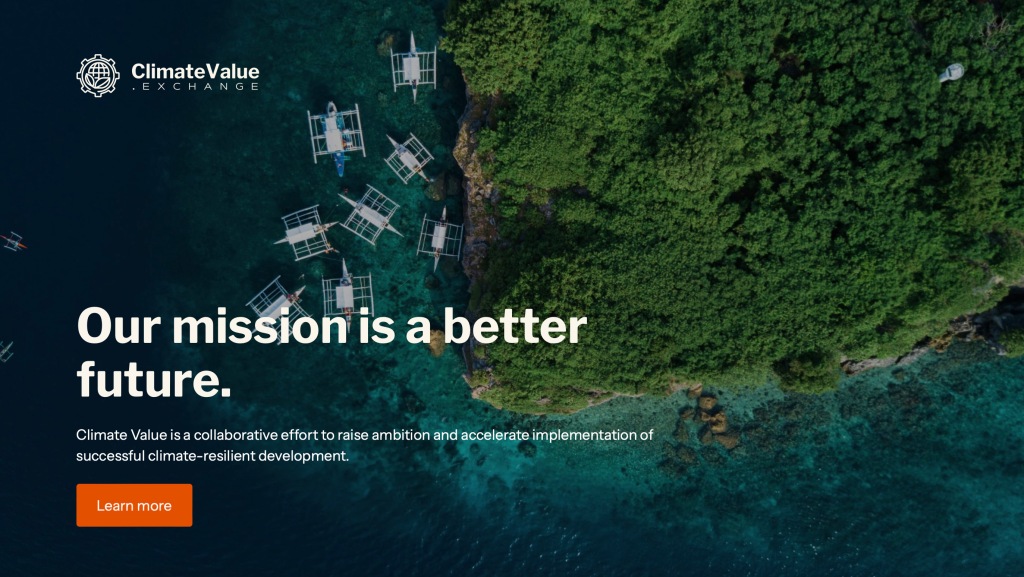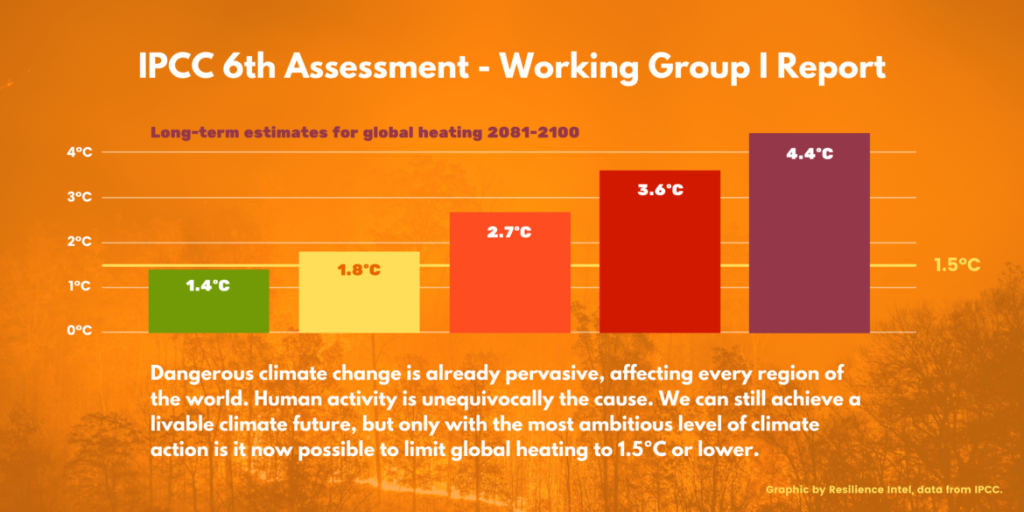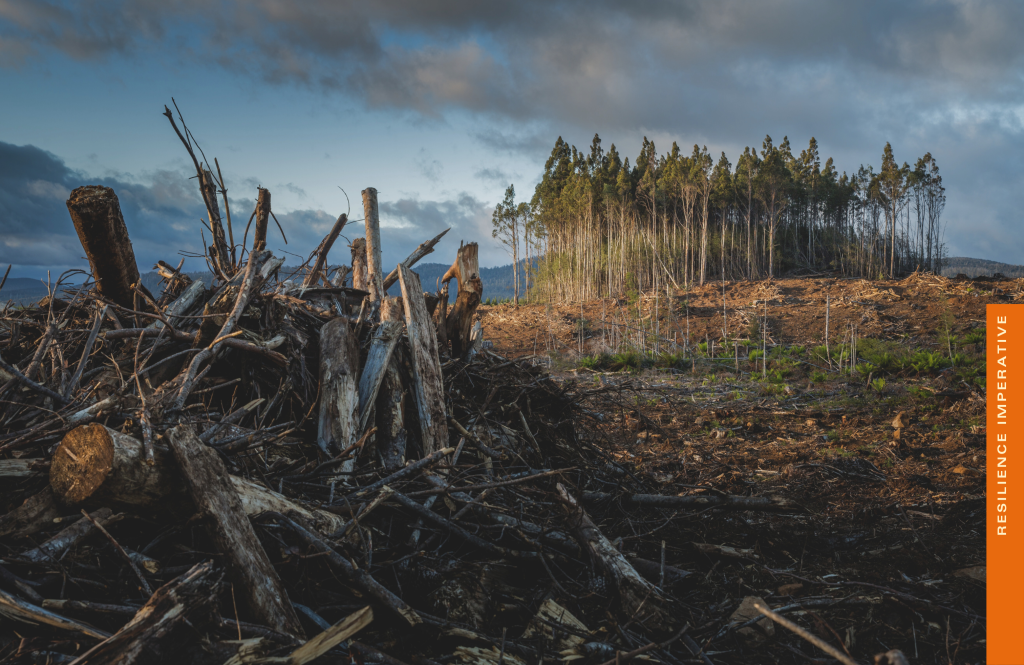Talanoa: Sharing in truth
In 2018, the Fijian Presidency of the UN Climate Change Negotiations convened the Talanoa Dialogue—a global consultation organized around a traditional Pacific story-sharing practice. The Talanoa Dialogue asked three questions, and gave participants the freedom to organize nearly any kind of meeting, and to respond to these questions in the way they saw most fitting:
- Where are we now?
- Where do we want to go?
- How do we get there?
The Resilience Intel initiative had kicked off one year earlier, with an aim of revealing hidden value and tracing non-financial returns on investment, to support a transition to 100% climate-smart finance. The Resilience Intel contribution to the Talanoa Dialogue was titled ‘Mapping Earth Systems Value to Action‘. This was, in a sense, the seed that would grow into the Climate Value Exchange.
Below, we update that briefing note with a focus on climate value and how it can be identified, protected, and expanded.
External returns on investment
The 2018 brief was premised on 1) the mainstream economy being tilted toward destruction of climate value, with far too little finance flowing to what was needed, and 2) a clear-eyed acknowledgement of Christiana Figueres’ common-sense ‘climate finance’ goal of ‘a world in which no money generates climate damage’.
It was clear then that to shape a world where all finance is climate-smart, and money flowing through the everyday economy is consistently aligned with a no climate damage standard, we will need to:
- define and deploy investable adaptation metrics,
- outline overlapping common goals for mitigation, adaptation and resilience,
- network Earth-systems data to finance,
- develop new business models and institutions optimized to leverage these interactions,
- and mobilize critical insights to move all finance toward macrocritical resilience imperatives.
We need to be able to measure the difference in value potential between practices that reinforce and protect natural systems and those that undermine and degrade them. Over time, these patterns show a clear advantage for investments that leave behind a wider foundation for the creation of value. Such investments generate external returns on investment (XROI). They are worth more to society, and so to banking and business, because they add value for all other kinds of investment.
It is important to recognize that XROI does not only refer to co-benefits for climate and nature, or to desirable social or sustainable development outcomes. XROI also includes the stronger, more durable functioning of businesses and institutions, and the health of public budgets, in a world where climate damage is not constantly proliferating and compounding. ‘Macrocritical’ returns are this kind of benefit to fiscal and macroeconomic health.

One example, which we are now focused on opening up through the Climate Value Exchange, is the convergence of public policy, climate-aligned investment, diversification of local economies, and outcomes related to Sustainable Development Goal 8: Sustainable Prosperity and Decent Work.
- It is the decent work piece that pulls the rest together: extractive economies create economic outposts that boom for a time and then vanish, when the extracted resource is depleted.
- Decent work is work that is not only healthy, safe, and rewarding, but productive of social good, valued by neighbors, and a source of purpose and meaning.
- XROI, including climate value, can provide measurable, investable insights that make new business models possible and diversify and reinvigorate economies left behind by extractive industries.
Rural economies can benefit from mapping Earth systems value to action, by localizing data-related work, attracting new investment, and fostering local economies designed to endure.
- Small, family-owned farms not only expand and diversify their income, and produce products that align with new national and global incentives; they also benefit from new service providers, and innovative financial entities.
- Soil ecology finance companies, for instance, can be solid, investable, scalable, and independent intermediaries for data, finance, best-practice sharing, and incubation.
- Meanwhile, local communities benefit from investment in these new activities, and from the local spending of the diversified workforce.
Small- and medium-sized enterprises (SMEs) become more important in this regenerative economic landscape. Instead of one large company organized around extraction of resources, diversified rural economies can see SMEs spring up and build renewable opportunity, by organizing to deliver a wider base of value creation, including through the responsible stewardship of natural resources linked to agriculture and land use.
Economy-wide resilience intelligence
To support such local economic benefits, public policy can be oriented toward delivering economy-wide resilience intelligence (ERI). This is critical, because the specific XROI of any given activity may be different enough so as not to be comparable against one standard. ERI allows policy-makers (local, provincial, or national) to create conditions for responsible measurement of shared value creation, across a range of metrics and desired outcomes.
In 2018, we called for ministers, nation-state governments, and multilevel multilateral processes to ask and discuss:
- What is economy-wide resilience intelligence (ERI)?
- How can we acquire sustained, evolving ERI?
- What external returns on investment will ensure multiple layers of value added, if we use this guidance effectively?
The implication was that such discussion would also effectively ask and answer this other, more salient question:
- What climate value actions and investments should we pursue to improve lives and livelihoods, while creating conditions for a sustainable future economy, with consistent expansion of health, wellbeing, and improved fiscal and economic outcomes?
Today, we need accelerated action in the same areas we recommended then:
- Technology – Improved, interconnected, and affordably deployed, to make useful linkage of financial to non-financial data, to better assess XROI;
- Soils & ecosystems – Focused investment to enrich soil ecology, restore natural systems, and protect the ecological integrity of entire watersheds, with clear rewards for stewards and producers;
- Correcting for XROI and ERI – Both private-sector and public-sector investment need new tools and standards for assessing, aligning with, and generating rewards for the creation of XROI and ERI;
- Direct financial action – Innovative financial instruments, linking a variety of stakeholders and their respective action environments, and foundational value creation.
These areas of action can bring new investment to communities and regions that need it. They would also naturally bring a shift in national subsidies: Global public spending to maintain the market dominance of climate-disrupting fuels has now reached $7 trillion per year. This is not sustainable; the cost is so high, it simply cannot be justified or sustained.
Global heating has now led to dangerously low snowpack across the northern hemisphere. That puts drinking water supplies, irrigation and agriculture, under severe stress. The most likely outcome is food and water scarcity, price spikes, and socio-economic upheaval. For some countries, expanded food insecurity and even famine might be the result. In 2022, before this particular degradation in climate value hit, 50 million people in 45 countries were listed by the UN as being “on the brink of famine”.
ERI and XROI are reservoirs of practical, investable insight premised on the recognition that these forces are interconnected. You cannot emit global heating pollution without incurring responsibility for global heating or for action to eliminate the global heating effect of your activities.
Correcting for XROI should mean putting a price on pollution. This can be done in a way that shields the vast majority of households from the costs fossil fuel companies would attempt to pass through. By returning revenues to households, as is being done effectively in Canada and Austria, it is possible to ensure the price pressure falls on polluters, while consumers are free to choose greener, healthier, more productive alternatives.
Those alternatives will emerge, diversify, and proliferate, as we get better understanding of the multidimensional effects of investment decisions and business practices. That better understanding is resilience intelligence.
Applied data science & innovation
The work of building integrated data systems for active, evolving resilience intelligence is ongoing.
- The Integrated Data Systems Initiative aims to provide multidimensional XROI and ERI insights for informing better decisions about food-related investments.
- A new Net Zero Data Public Utility was announced at the COP28, building on a proof of concept outlined by the multilateral Climate Data Steering Committee in its 2023 report.
- The Commons is a nonprofit partnering with individuals and organizations to access, organize, and share data that inspires action that restores our environment.
- The Climate Value Exchange will support sharing of insights from these and other initiatives, and help decision-makers stay ahead of the curve to invest in the widest base for sustainable value creation.
Given the ongoing trend toward climate breakdown, we want to add in 2024 that both catalytic and mainstream financing for agroecological and regenerative practices can benefit from these data systems integration and insight-sharing efforts. XROI and ERI are critical for assessing, incentivizing, and generating investment in practical climate value.
Material change in the way human systems interact with nature—and in the scope, scale, and longevity of opportunity available to local economies across the world—will follow the adoption of multidimensional data systems linking Earth systems health and resilience to economic activity.
More about data for decision-making





